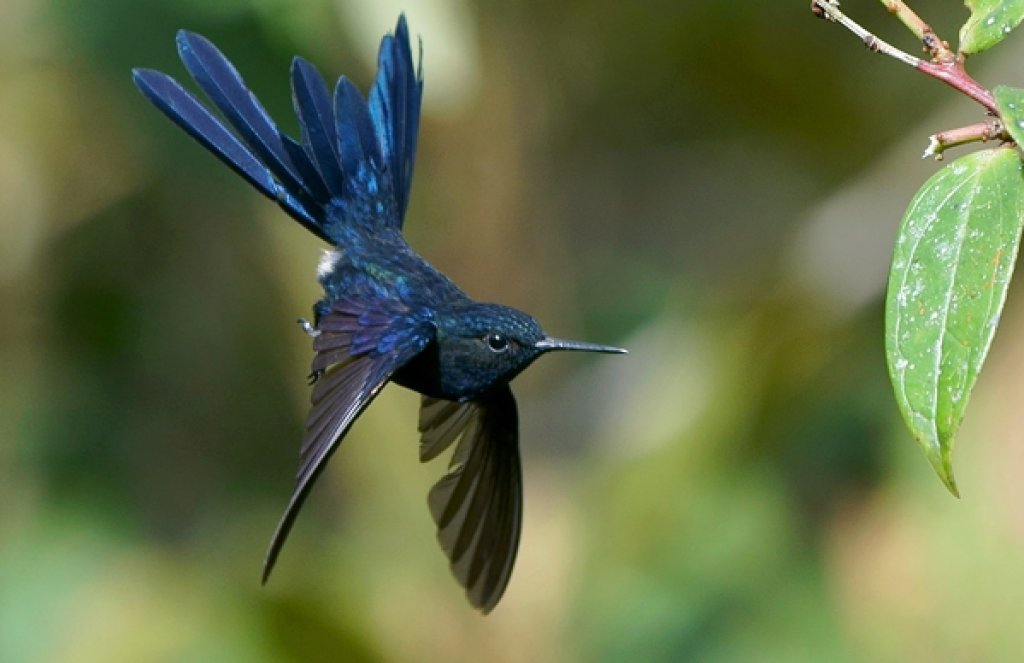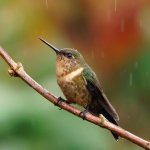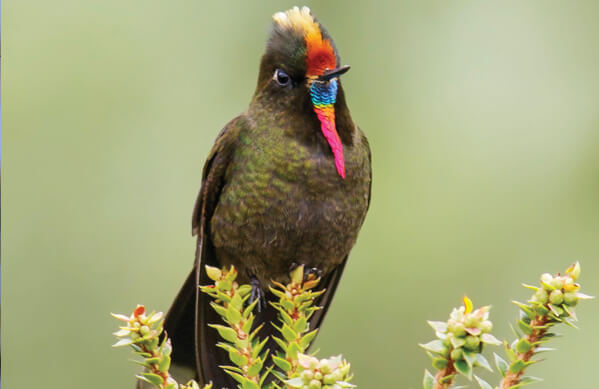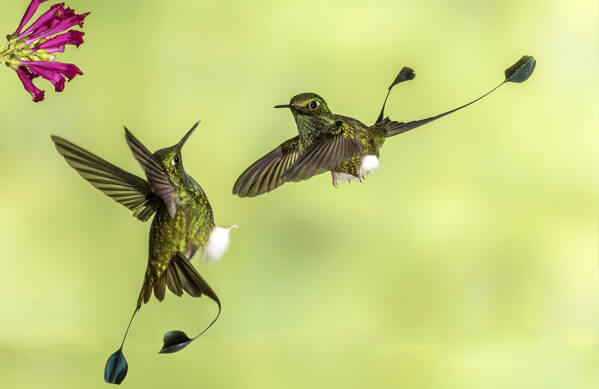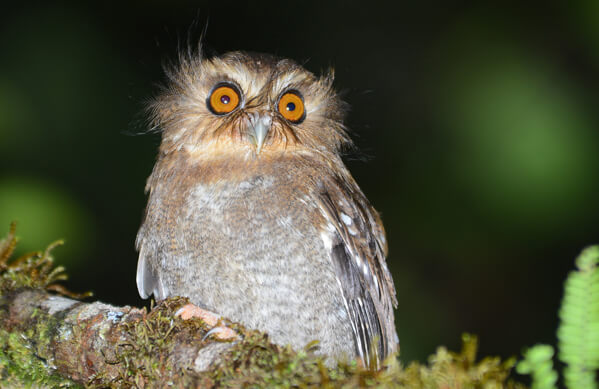About the Royal Sunangel
In the right light, a male Royal Sunangel is a striking sight, with deep, shimmering violet-blue plumage and a long, forked tail. Like the Rainbow-bearded Thornbill and Glittering Starfrontlet, this bird really shines when its feathers reflect just the right angle of direct light, although in low light and at many other angles, this avian gem looks dark and dull. The female Royal Sunangel also has a forked blue tail, which is shorter than the male's. Unlike the all-dark male, the female has a green back, spotted throat, and green and light-rust underparts, topped by a whitish chest crescent.
The Royal Sunangel is known only from a narrow, disjunct range in northern Peru and southern Ecuador. It belongs to an interesting sub-group of hummingbirds named for the mountains where they live.
Clade Hummer
The Royal Sunangel is part of a sub-group of hummingbirds known informally as the “Andean clade.” The hummingbirds of this group, which includes six other sunangel species as well as the Booted Racket-tail and Rainbow Starfrontlet, share common features that include similarities in nest construction, courtship behavior, vocalizations, and also the way these species briefly open their wings just after alighting on a perch.
Songs and Sounds
Listen to the Royal Sunangel's feeding calls here:
Breeding and Feeding
A Territorial Tribe
Like many hummingbirds, the Royal Sunangel follows and returns to a regular circuit of feeding sites, called a “trapline.” This species is a versatile forager, feeding on nectar and insects both while perched and in hovering flight. Sometimes, these birds even land on the ground to access especially low blossoms, while others have been observed probing flowers through holes likely made by songbirds called flowerpiercers, which specialize in acquiring nectar this way. Royal Sunangels may also visit hummingbird feeders, where they join other species such as the Long-tailed Sylph for sips of sugar water.
In at least one location, researchers have observed that males favor higher-altitude feeding areas than do females; they also prefer different flowering plants.

Like others of its family, including the Rufous Hummingbird, the Royal Sunangel is fiercely territorial at its feeding areas. Males chase and attempt to intimidate intruders, including other males and even large insects. Visiting females receive a warmer reception: The male courts a female by flying in circles and U-shapes while opening and closing his long, colorful tail and calling in rapid, high-pitched notes.
Region and Range
Ridgetop Royalty

The Royal Sunangel is most often sighted on sandy ridgetops in and near humid "elfin" forest and shrubby areas. These montane habitats sit between 4,400 and 7,200 feet high on the eastern slopes of the Andes in northern Peru and southern Ecuador. In this misty environment, trees and shrubs are often encrusted with moss and lichen. The Royal Sunangel has also been found living on the sides of steep, wooded ravines.
Conservation of the Royal Sunangel
Habitat loss from agriculture, mining operations, and road-building is the biggest potential threat to the Royal Sunangel within its small, already-fragmented range.
In 2005, ABC supported Peruvian partner Asociación Ecosistemas Andinos (ECOAN) in creating the Abra Patricia Reserve in northern Peru, which protects nearly 25,000 acres of montane forest and more than 300 bird species, including the Royal Sunangel, the Endangered Lulu's Tody-Flycatcher and Ochre-fronted Antpitta, and the Long-whiskered Owlet. ABC and ECOAN also supported the establishment of nearby private conservation areas on community land, which also harbor these species. Additional habitat is protected on lands owned by the Peruvian government.
Get Involved
Many of the rarest bird species in the Western Hemisphere remain relatively unknown. You can learn more about these birds and the threats they face by signing up for ABC's Bird of the Week email series, which frequently highlights these fascinating birds.
American Bird Conservancy and our partners throughout Latin America and the Caribbean have created and expanded more than 100 bird reserves, which protect upward of 1.1 million acres of vital habitat. Together, we've planted more than 6.8 million trees, helping to restore degraded and damaged habitat. You can help us continue to protect endangered birds by making a gift today.





































